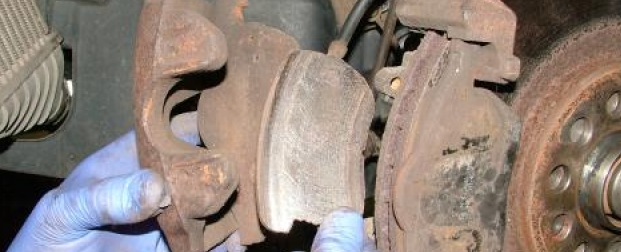Everything is great if vehicles are running the way that they’re supposed to. On the other hand, a whole range of problems could occur while motorists are driving. The result of this will be the motorists getting stranded somewhere and having to rely on a tow truck in Perth. If your car has developed a burning smell or is pulling to the right or left side, do you have the knowledge to inspect the vehicle and diagnose what the problem is before you breakdown? you might have seized or binding brakes.

Seized Brake Caliper: Locating the Symptoms
If a brake binds or drags, there are several reasons as to why this could be happening. Usually, there is a part stuck inside the system. Perhaps the piston inside the caliper is sticking or there are skewed brake pads. If you leave your car parked in a damp or moist environment for extended periods of time, the brake pads might stick to the brake disc. That will cause the brake caliper to seize too.
If you are not using your car and the brake still seizes, the symptoms will be very apparent. As you go to drive, it will continue to feel like the brakes are on. In very bad situations, the vehicle will remain completely idle. When the caliper slide pins are to blame, the vehicle will seem like it moves fine. However, only the brake pads on the piston side will get pushed onto the brake disc. As a result, one of your wheels will have a weaker braking ability and the brake pad near the piston will get worn out faster. You may apply the brakes and notice the car pulling to the side.
Sometimes the brake pad might get stuck and cause the vehicle to feel like it has very little power. This resembles the same feeling as the parking brake being turned on. The only difference here is that the vehicle could pull to one side while driving, even if you are not pressing down on the brake pedal.
If you have seized brakes, they will get very hot. This will cause an easily recognizable acrid smell to form inside the vehicles cabin. You may even see some smoke too. If any of these symptoms are noticeable then do not drive it. Brakes that are binding badly may cause a fire if you are driving. Sometimes there might not be a fire but your brake discs are certainly going to be badly damaged. In a lot of situations, binding brakes will gradually occur on a single wheel as time goes on. You probably wouldn’t even notice this problem until you get the yearly inspection on the brakes because this is when they undergo a functionality test.
What causes brakes to seize?
Two big reasons for brake seizing is corrosion and not driving your vehicle for a long time. For example, if you have not driven your vehicle for months and it’s just been left parked in your driveway that whole time, your brakes are likely going to seize. There will likely be rust that formed on your brake discs. This will cause the brake pads to get stuck to the caliper piston or the discs. With all the temperatures that brakes are exposed to, this makes them very susceptible to corrosion. What’s worse is that brakes are rarely serviced, even when you get your brake pads replaced.
When you are inspecting a car’s rear brakes, the cause may not be from the cylinder or caliper. Instead, the cause could be from the handbrake mechanism or the cable itself, causing the brakes to always stay on. You can lubricate these parts often to prevent this problem from occurring. You should also flush your whole brake system of its fluid and replace it every couple of years. The brake fluids will absorb water and this moisture will form corrosion inside the caliper.

Seized Brake Caliper: Unsticking It
If the skewed brake pads or parking brake cable is stuck to the brake disc, it is easy to fix this problem. Take off the brake pads and apply a little bit of grease along the edge. This should repair the skewed brake pads. After the pads are no longer sticking to the disc, they can be replaced and the disc can be resurfaced.
You will need a specialized tool called the “C-clamp” to retract the brake pad if the slide pins or caliper pistons have seized. The brake system’s hydraulic pressure can remove the caliper pistons if they’ve seized. Once the caliper is separated from the brake disc, the brake pedal should get pumped so that the piston moves away from the corroded area. At this point, you can disassemble everything and then rebuild the caliper.
Should the brake caliper be replaced or rebuilt?
If you fix the brakes that were stuck, the problem could happen again if it was caused by the slide pins or caliper piston. The reason is that the corrosion which originally caused the brakes to seize is still there. One option is to replace the bad caliper, but it would be cheaper to just rebuild. Anyone with some knowledge of calipers can rebuild them. You just need to disassemble the caliper and then clean it first. Then, you remove the rubber parts and replace them. The piston should be replaced too.
If you find very little corrosion on the inside, then rebuilding it might be better. There is a tool called a brake hone that will be needed to clean the caliper’s internal bore. If you can afford to purchase a new caliper, then that would be better and faster.